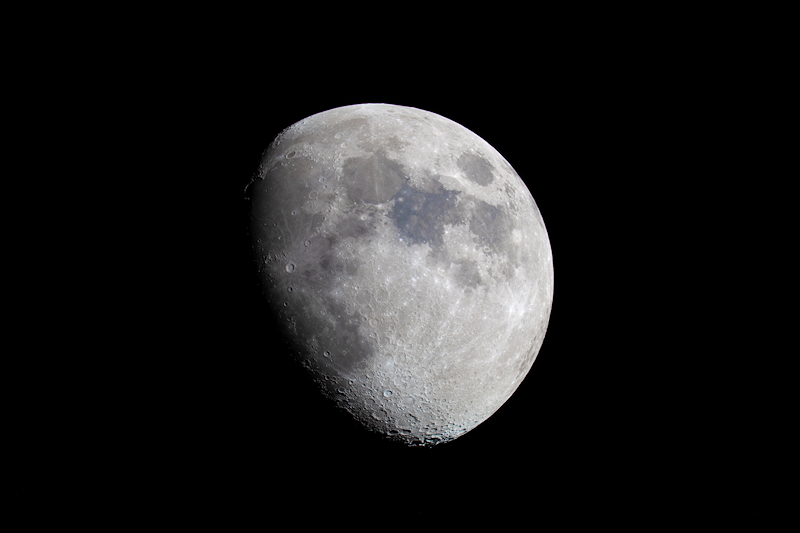D850 DSLR imaging: Moon, Jupiter
Posted: 13 June 2019
Thursday, 6 June 2019, started clear but clouds began appearing mid-day with a cloudy forecast for that night. Cloudy skies continued on Friday, 7 June. Saturday, 8 June, dawned clear with a clear sky forecast for that night. I attended a "Live Music and Star Party" event at Oracle State Park, our IDA "International Dark Sky Park". Sunday, 9 June, was cloudy. Monday, 10 June, Jupiter was at opposition and of course the sky here was cloudy. Tuesday, 11 June, dawned clear but clouds arrived mid-morning with cloudy forecasts for the next few nights. Wednesday, 12 June, was mostly cloudy until sunset approached when the sky became mostly clear (although the forecasts still called for a mostly cloudy sky).
|
Open: Wednesday, 12 June 2019, 1927 MST Temperature: 90°F |
Session: 1361 Conditions: Mostly clear |
Equipment Used:
12" f/8 LX600 w/StarLock
2" 24mm UWA eyepiece
Focal Reducer
2" 2X Powermate
2" 4X Powermate
Binoviewers 20mm eyepieces
Camera:
D850 DSLR
1935 MST: sunset.
I SYNCed the observatory clock.
1936 MST: LX600 ON, StarLock OFF, High Precision OFF.
1939 MST: viewed the planet Mercury, 102X and 203X. A half-phase was nicely visible.
Then viewed the waxing gibbous Moon, 102X and 406X.
1953 MST: began preparing the D850 DSLR for lunar imaging.
Took the following photos of the Moon at prime focus + focal reducer (1/100sec, ISO 100), prime focus + 2X Powermate (1/320sec, ISO 800), and prime focus + 4X Powermate (1/320sec, 1/250sec, ISO 3200):






2011 MST: first Kissing Bug of the night terminated.
2020 MST: ended lunar imaging.
2030 MST: Jupiter was now above the hill to the southeast but still very low and behind a tree.
Two more Kissing Bugs terminated.
Did some lunar observing using the William Optics Binoviewers, 122X. Nice views.
2045 MST: Jupiter was now clear of the tree, but still low in the southeastern sky. Viewed it with the William Optics Binoviewers, 122X. The view was not very good due to the low altitude, but the Great Red Spot (not so great) and the four Galilean Moons were visible. The South Equatorial Belt that was trailing the Great Red Spot was essentially invisible.
Terminated three more Kissing Bugs, but #7 got away behind the dome.
I decided to try imaging Jupiter even though it was still low in the sky in order to try to get the Great Red Spot which was nearing the planet's rim. Focused on the star Antares and locked the 12" telescope primary mirror. Due to the planet's low altitude seeing was not good. The following photos don't show much in the way of details but do show the relative scales at prime focus, prime focus + 2X Powermate, and prime focus + 4X Powermate.
Prime Focus (1/160sec, ISO 100)

Prime Focus + 2X Powermate (1 sec, ISO 800)

Prime Focus + 2X Powermate (1/160sec, ISO 800)

Prime Focus + 4X Powermate (1/160sec, ISO 3200)

The Great Red Spot is visible near the planet's limb on the right in the last photo.
2155 MST: ended imaging.
2205 MST: viewed Jupiter, 102X.
2206 MST: LX600 OFF.
When I closed the dome I saw Kissing Bug #7 and terminated it.
|
Close: Wednesday, 12 June 2019, 2220 MST Temperature: 78°F |
Session Length: 2h 53m Conditions: Mostly clear |
Always enjoyable to re-read these Willy Ley space books that I got back in 1961.

Comments are welcome using Email. Twitter users can use the button below to tweet this report to their followers. Thanks.
Cassiopeia Observatory Home Page
Copyright ©2019 Michael L. Weasner / mweasner@me.com
URL = http://www.weasner.com/co/Reports/2019/06/13/index.html
